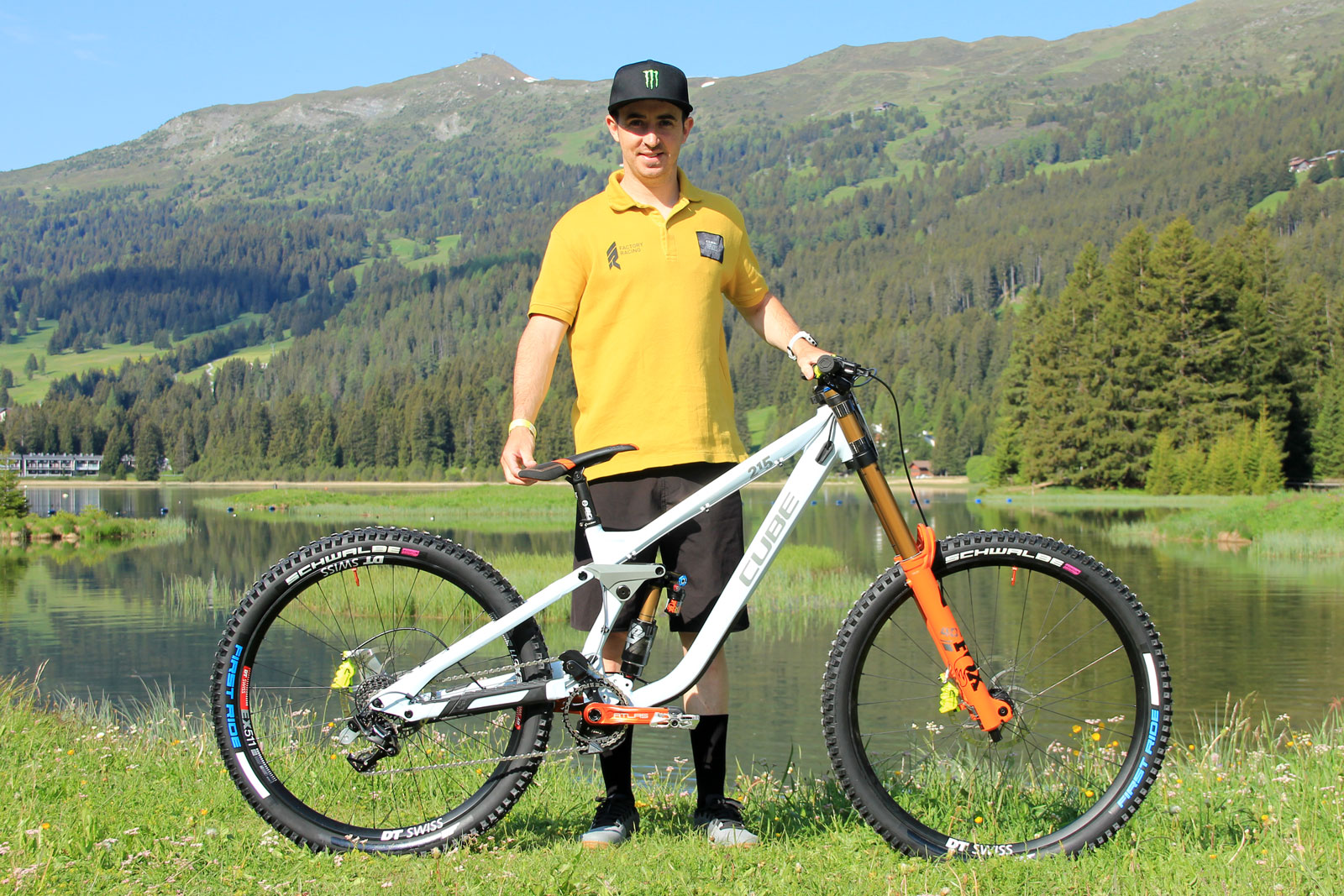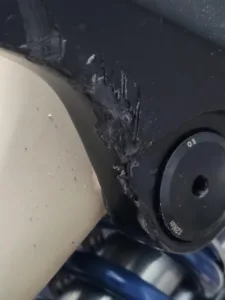Last weekend saw the 2023 UCI MTB World Cup Downhill get off to a thrilling start in Lenzerheide, Switzerland. A number of new prototype frames made their debut, most notable being Bernard Kerr’s lugged Phoenix with two chains, and Brook MacDonald’s Mondraker Summum complete with a multi-position BB module. Meanwhile, over at Cube Factory Racing, Danny Hart was on a subtly updated version of his Cube TWO15 Prototype – complete with a monstrously large floating brake arm.
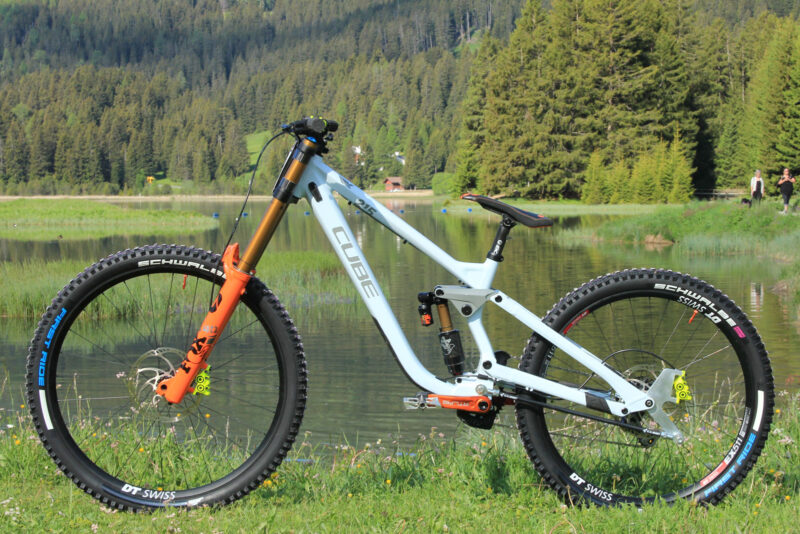
Some of you may recall that Danny’s season was forced into a late start after he had to abandon the Lourdes test event in order to treat a gnarly skin infection on his leg (view here with caution). We are pleased to report that Danny is fully recovered, and was able to lay down a very respectable race run in Lenzerheide. He was actually second fastest through the speed trap with a speed of 57.14 km/h – bettered only by race winner Jordan Williams’ 57.96 km/h.
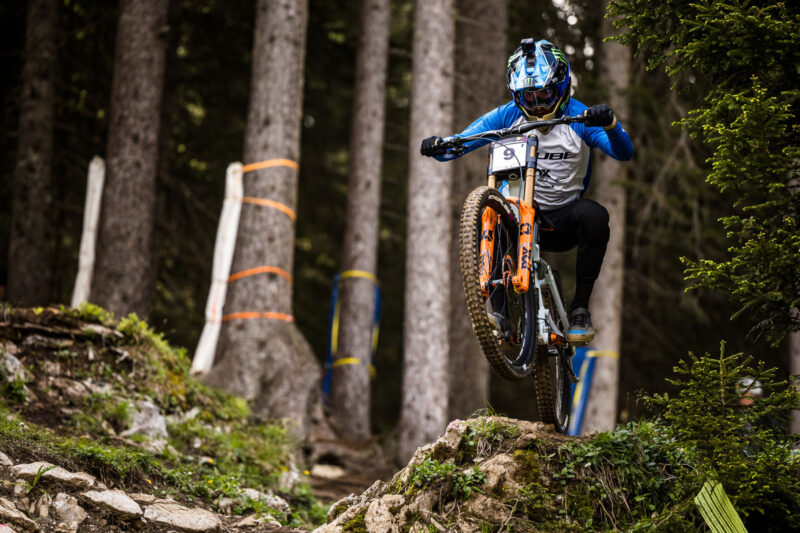
Danny went well on the new frame, placing 12th in finals with a time of 02:44.234 – just over 5 seconds back from Jordan. It’s likely the 2011 and 2016 Downhill World Champion was hoping for more last weekend, but it’s undeniably a solid start to the season. Here are the details on the Yorkshireman’s race bike.
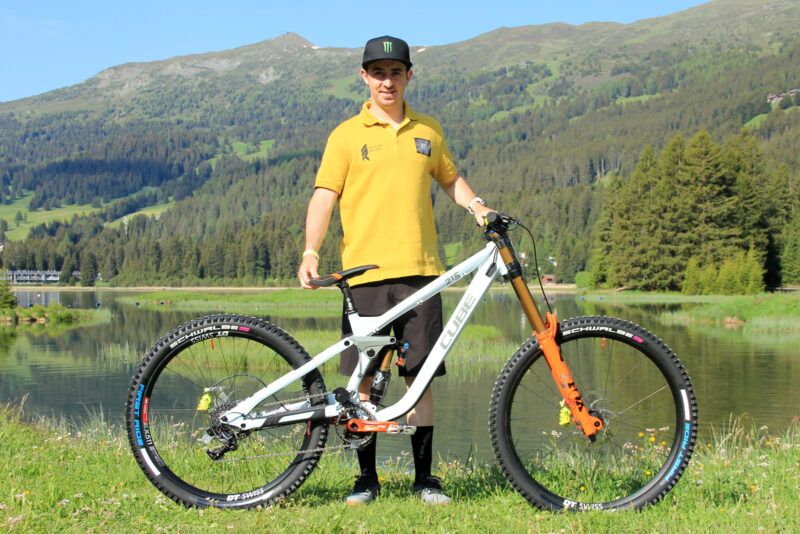
Danny Hart’s Cube TWO15 Prototype
At 178 cm tall (5ft 10″) Danny Hart is on a 469mm reach Cube TWO15 prototype, with a dedicated mullet wheel size configuration. As compared to the current TWO15 HPC 29 that Danny raced in 2021, the new bike still runs a Horst-Link (four-bar) suspension platform, but the location of the main pivot is a little higher, necessitating use of an idler pulley to minimize the negative effects of chain growth.
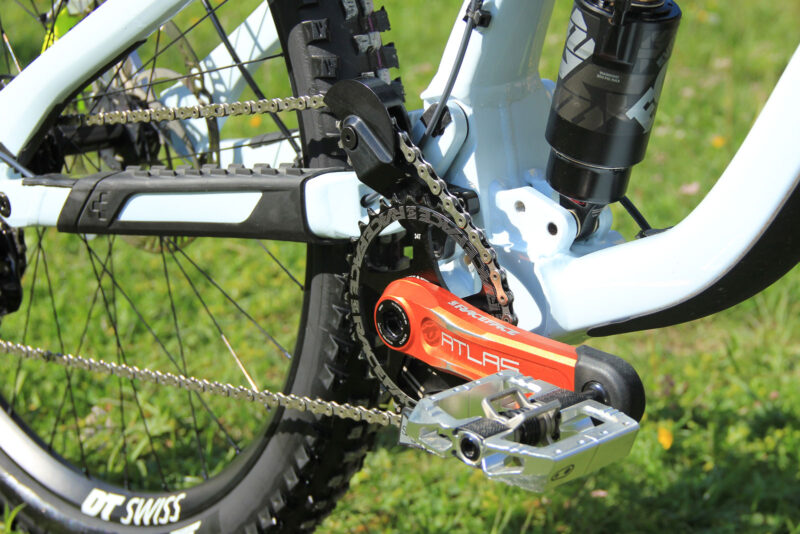
The idler pulley is mounted directly to the frame’s front triangle, and so it’s position does not change as the rear wheel is pushed through its travel. That’s in contrast to some high(er) pivot designs wherein the idler is mounted to a lower link or the chainstay – as is the case with i-track designs – and thus idler position relative to the BB changes throughout the travel.
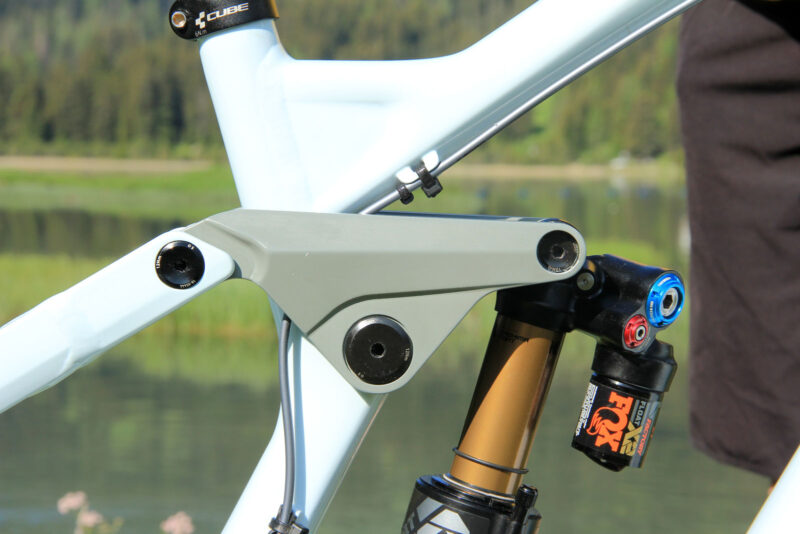
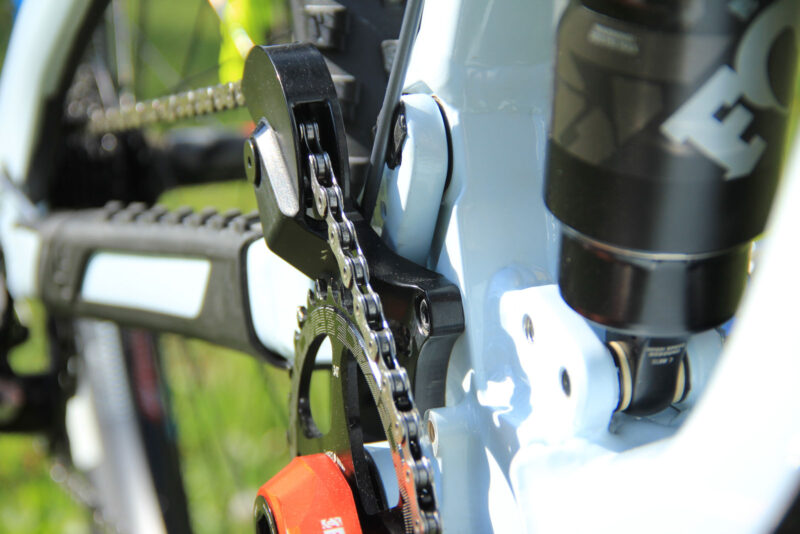
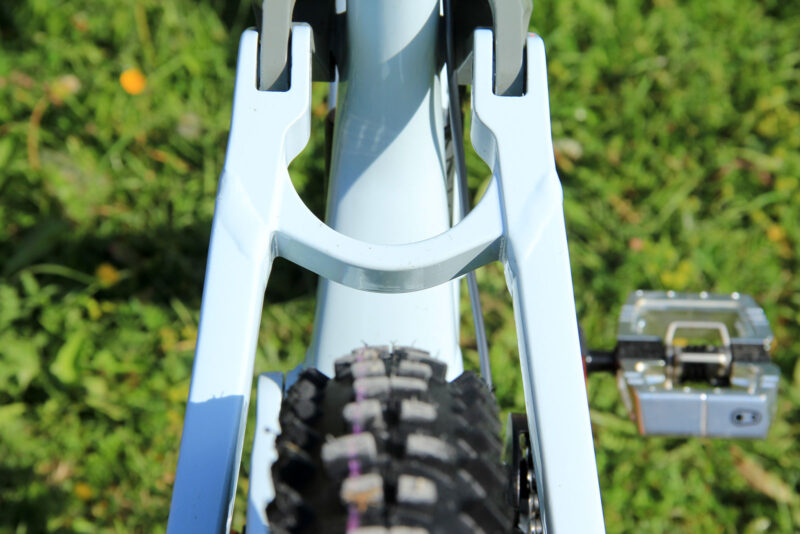
Danny actually prefers the feel of a coil shock, but the clock says that he goes faster on an air spring. Indeed, he has run a coil shock for most of his career, but the team’s timed testing in San Remolo revealed that the air shock saves him around two seconds on a two minute track. That’s too big a margin to ignore, and so in Lenzerheide last weekend, Danny’s bike was home to the Fox Float X2, bolted to the frame in the less progressive of two possible positions.
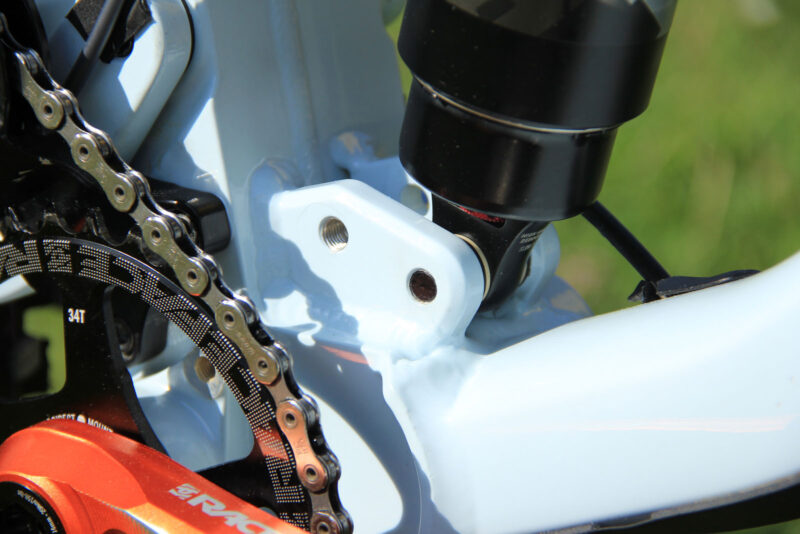
In that air can, Danny is running 202 PSI with 3 volume spacers. In the Fox 40 Factory Fork, we have 84 PSI with 6 volume spacers. Danny’s mechanic tells us he likes quite a light compression tune, with rebound damping on the faster side.
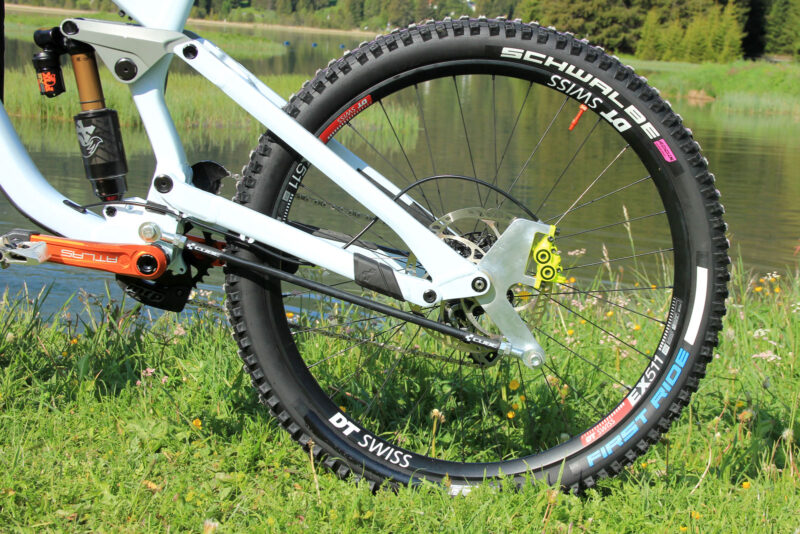
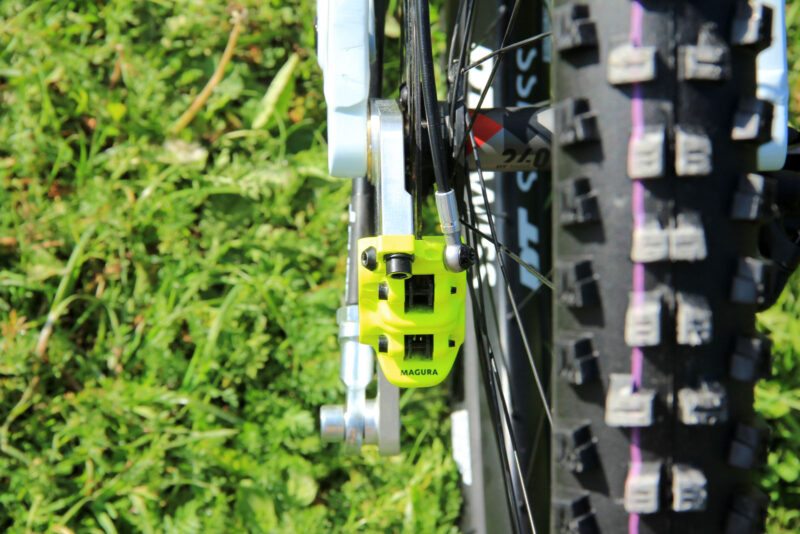
New for this season is the addition of a floating brake arm. Instead of mounting the rear brake caliper to the stay, Cube have mounted it to a secondary structure that is mounted to the front triangle. Thus, all forces associated with rear braking are transmitted into that over-sized bottom bracket region, instead of into the frame linkage where they might negatively impact the suspension’s ability to keep the rear wheel tracking true – this property exhibited by suspension linkages is generally referred to as anti-rise.
Dependent on the linkage design in question, a yank on the rear brake when the bike is rolling at speed can cause the suspension to extend, or it can cause it to compress. Arguably, neither of these outcomes are ideal, and so many suspension manufacturers work to keep anti-rise figures close to 100% around the sag point, wherein the suspension remains neutral under braking. The latest Actofive P-Train 165 is a good example of that.
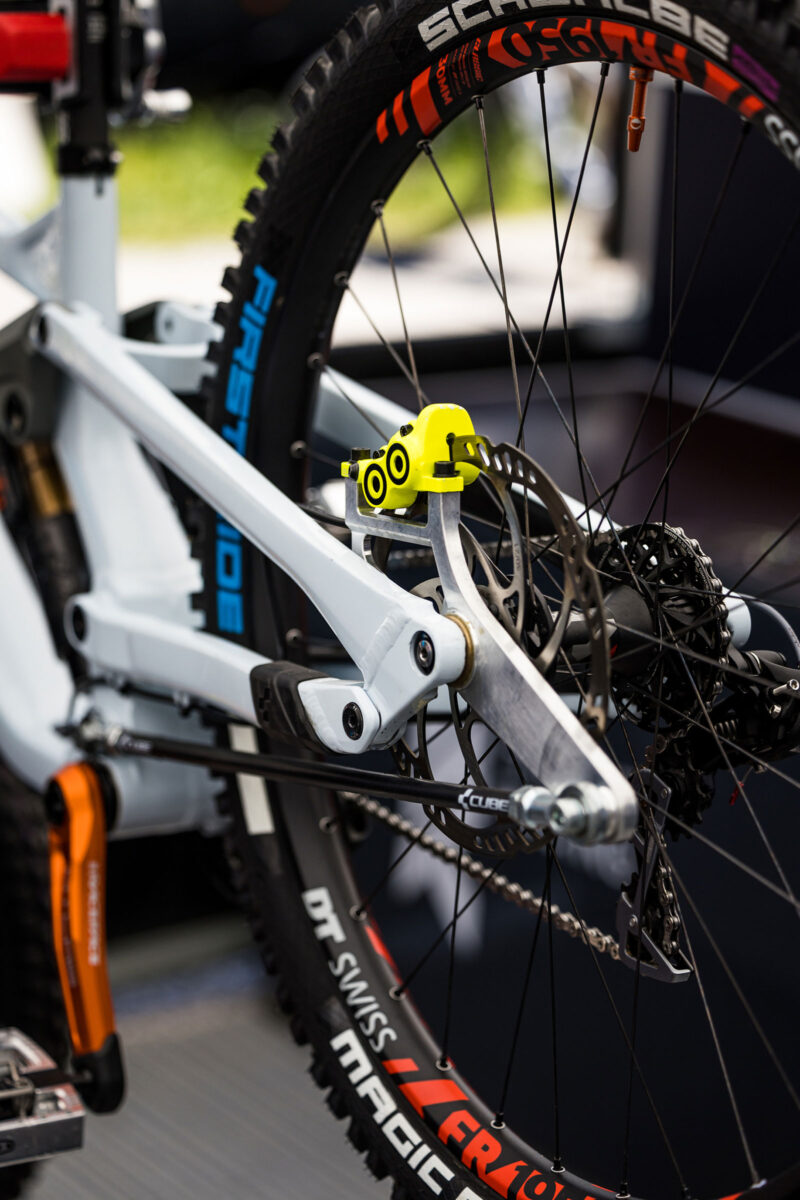
We haven’t spoken to the Cube engineers specifically on this, but it is likely their use of the floating brake arm is improving the bike’s ride feel specifically in heavy braking scenarios. Danny Hart himself tells us he prefers the bike with this brake arm, having raced the current prototype without it throughout last season. And, timed testing reveals the brake arm makes the bike faster, too.
On this prototype, an over-sized headtube accommodates reversible headset cups that allow for head angle adjustment of +/- 0.6°. Danny opts for the steeper of the two positions.
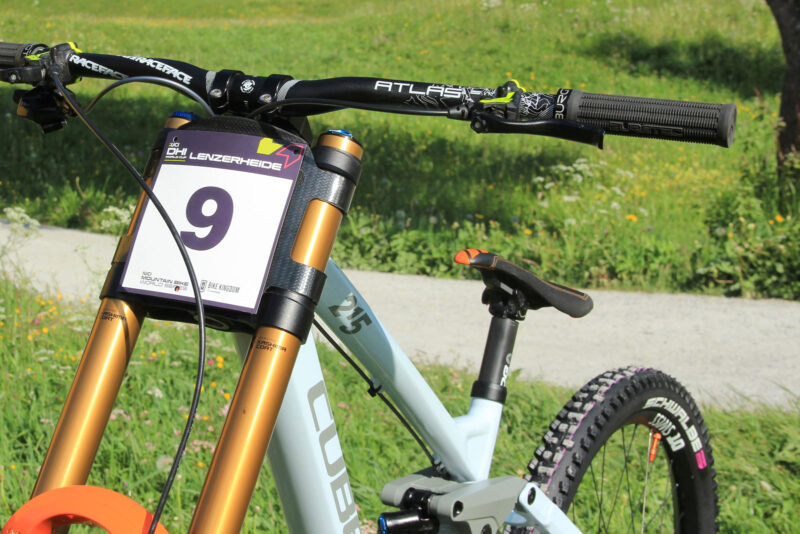
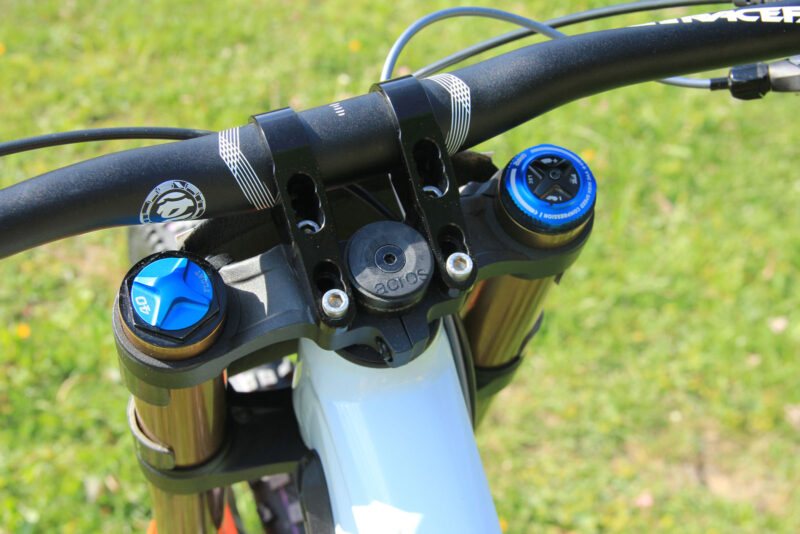
In the cockpit, a 20mm rise Race Face Atlas bar is cut down to 780mm and clamped to a 50mm custom stem. Danny prefers to roll the bar back further than most.
His mechanic tells us that the team riders have two Schwalbe tire casings available to them at a race weekend – “a downhill casing and downhill casing with a reinforced sidewall”. We deduce this to refer to the Schwalbe Super Downhill and Super Gravity casings, respectively. Danny prefers the former, it being the lighter of the two options, because it helps him pedal faster out of corners and out of the start gate.
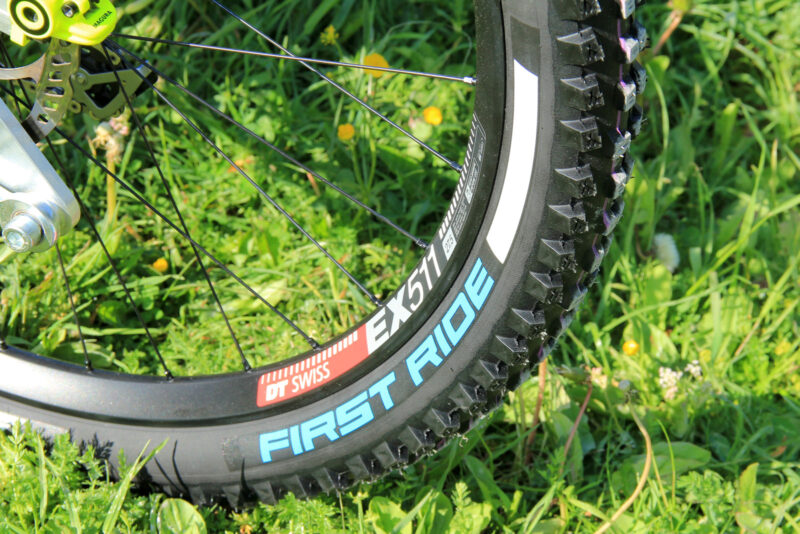
Thus, when the track isn’t too littered with sharp rocks and roots, he will run the lighter tire in the rear without use of a tire insert. If he starts to puncture or dent rims, he’ll add a CushCore, or just switch to the heavier, more reinforced tire without the CushCore. On the front, Danny always opts for the lighter tire without an insert.
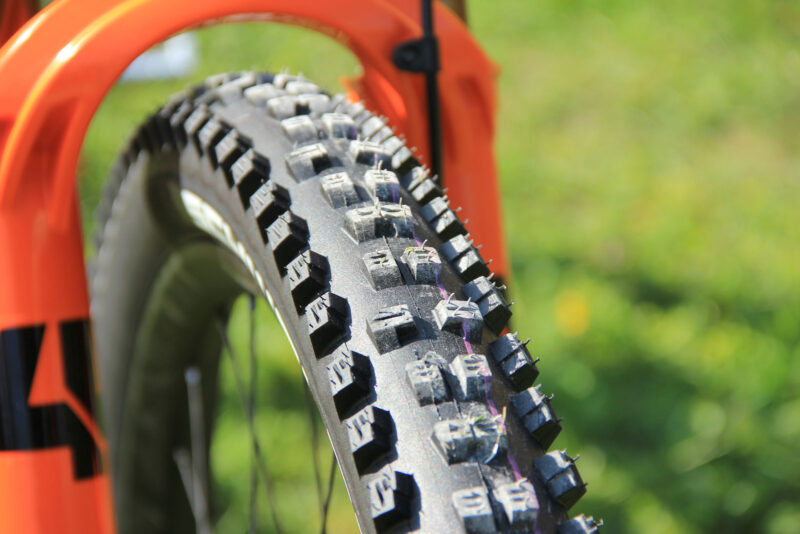
Last weekend, Danny was running the front wheel of the recently-released DT Swiss FR 1500 Classic wheelset, home to 28 spokes and a DT Swiss 541 rim. On the rear, we saw a DT Swiss EX 511 rim laced to a Ratchet EXP hub with the 36t ratchet. Both rims were home to a new “First Ride” tire from Schwalbe featuring an all-new tread pattern; the name of this one was blanked out.
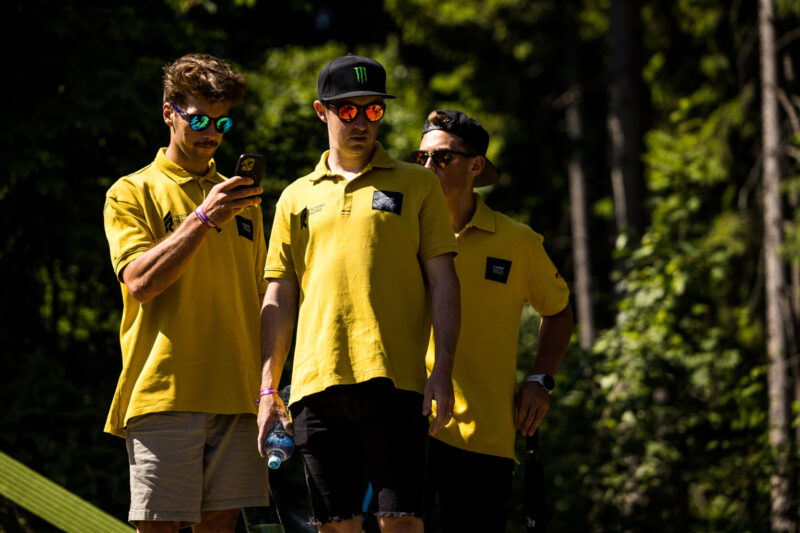
Good luck to Danny and the rest of the Cube Factory Race Team this weekend in Leogang. Tomorrow could bring in some rain, so we may not get the super dusty, dry conditions seen in Lenzerheide!
